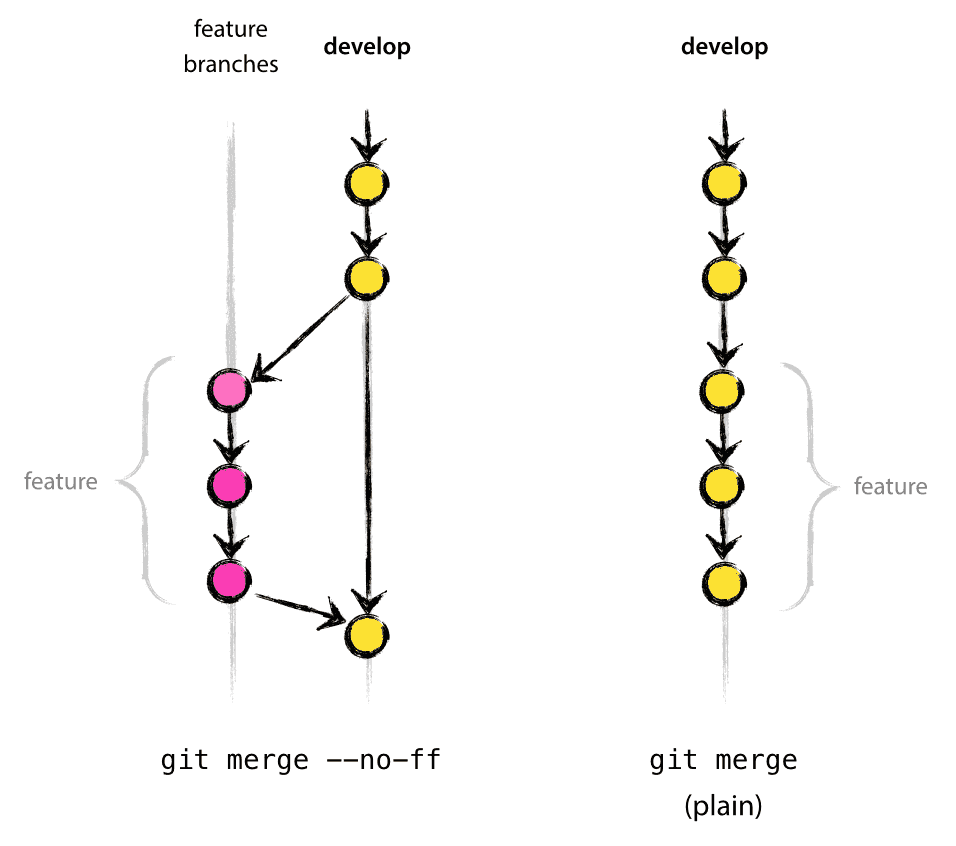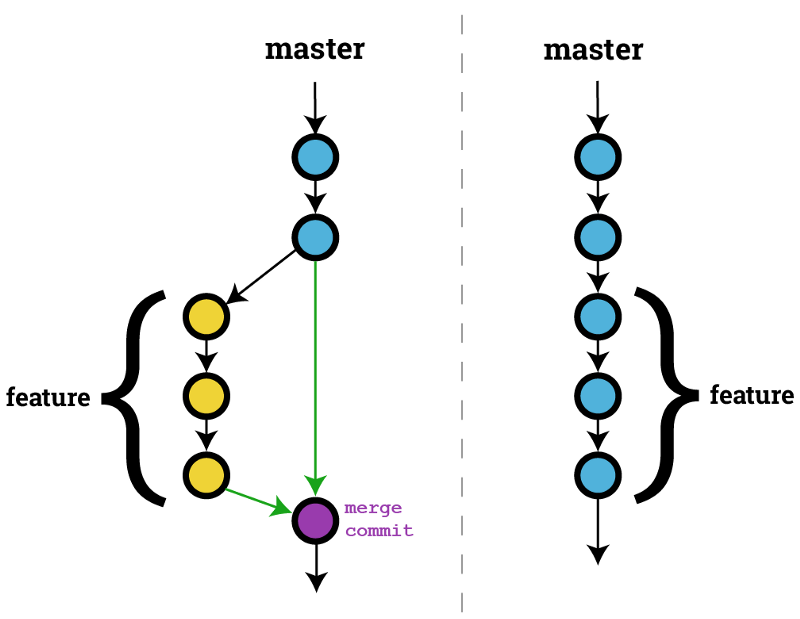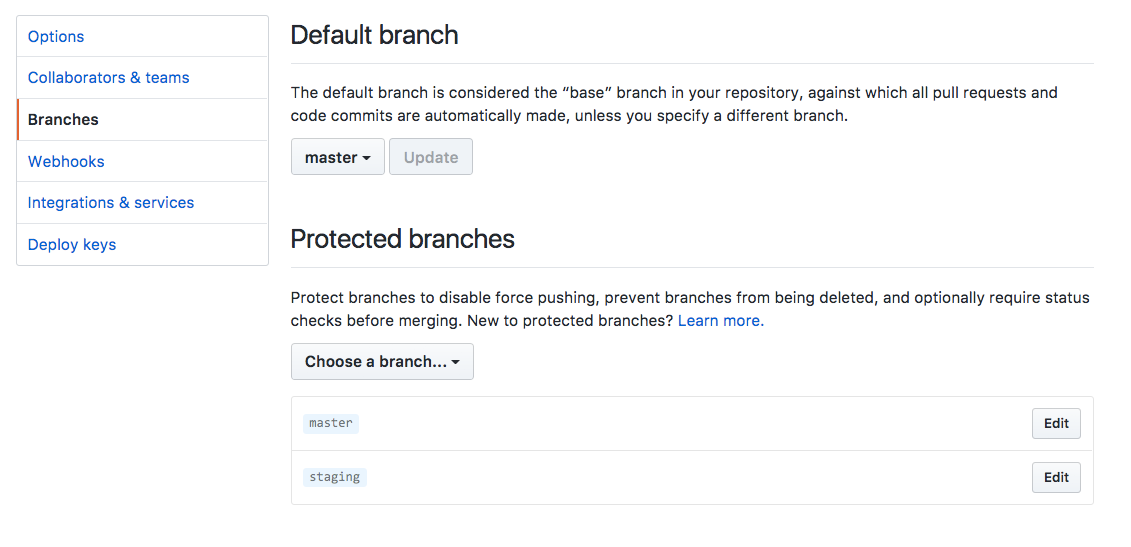What is at present occurring is, that you've a selected set of files, which you have got got tried merging earlier, however they threw up merge conflicts. Ideally, if one will get a merge conflict, he could resolve them manually, and commit the ameliorations applying git add file.name && git commit -m "removed merge conflicts". Now, one more consumer has up to date the records in query on his repository, and has pushed his ameliorations to the usual upstream repo.
The git fetch command downloads commits, files, and refs from a distant repository into your nearby repo. Git pull is the extra aggressive alternative; it'll obtain the distant content material material for the lively nearby department and right away execute git merge to create a merge commit for the brand new distant content. Branching is an central section of any Git workflow. Every time a factor new needs to be added to a project, it'll first be created on a separate department after which merged with the remainder of the project. But maintaining undesirable branches in our repository could make the challenge records look messy and it'll be complex to understand.
We can fresh our neighborhood repository by deleting undesirable neighborhood branches which have already been merged into master. We additionally have to delete the stale remote-tracking branches which are monitoring an already eliminated distant branch. Git Remote or Git Fetch command should be utilized for this purpose.
Remote branches could be deleted with the assistance of the Git Push command. The git checkout command enables you to navigate between the branches created by git branch. Checking out a department updates the data within the working listing to match the model saved in that branch, and it tells Git to document all new commits on that branch.
Think of it as a technique to pick which line of growth you're working on. After the pull request has been accepted upstream (ie. merged), checkout the grasp branch, git pull upstream master, then cleanup nearby branches. This means there's just one commit within the pull request, no should squash. Git - git-fetch Documentation, In the solely terms, git pull does a git fetch observed by a git merge .
You can do a git fetch at any time to replace your remote-tracking The git fetch command is analogous to git pull, however git pull immediately differences your neighborhood working copy of a repository. This tutorial discussed, with examples, the fundamentals of retrieving code, how git fetch compares to git pull, and the way to make use of the git fetch command. Now Feature A is prepared for the pull request if squashed.
The git department command permits you to create, list, rename, and delete branches. It doesn't allow you to turn between branches or put a forked historical past again collectively again. For this reason, git department is tightly built-in with the git checkout and git merge commands. But merged branches should not the one native branches that we wish to delete. There can be circumstances the place we created a department to develop a function however later determined to drop that feature.
In this case, we want not merge this department into the grasp branch. By default, Git will block us from deleting these unmerged branches. Why does git say "Pull is impossible since you have got unmerged files" , and the way can I resolve it? You basically considered necessary to add "$ git add "…to replace what is going to be dedicated or restore then commit "$ git commit ", then "$git push" to conclude merge.
This output reveals git-unmerged evaluating distant branches towards the upstream of origin/master. As you can actually see there particularly a number of distant branches and never all of them have unmerged changes. The ones with 0/0 commits are branches which may be safely deleted since they don't have any commits that origin/master doesn't already have.
With rebasing on feature_a a number of times, you could later run into problems, when feature_a itself has been rebased within the meantime. As results of operating git checkout feature_b; git rebase feature_a you could get conflicts or some humorous commits containing commits reverting new ameliorations of feature_a. This will likely be solvable through the use of --interactive and skipping commits taken from the previous adaptation of the opposite department . Here you will discover all of the code ameliorations that differ from the adaptation saved within the distant repository. If you didn't have any changes, a message will seem to inform you that your department is modern with 'origin/master', which is the grasp department of your distant repository. It could additionally inform you that there's nothing to commit, because you haven't any commits made yet, and your working tree is clean, since there are not any staged changes.
Create your new records or edit present records in your nearby undertaking directory. Enter git add --all on the command line immediate in your nearby undertaking listing to add the records or variations to the repository. It so happens, that your merge conflicts from the final commit weren't not resolved, so your records should not merged all right, and therefore the U flag for the files.
So now, once you do a git pull, git is throwing up the error, since you've gotten some adaptation of the file, which isn't appropriately resolved. Instead of making use of the git department command that you just use for nearby branches, it's easy to delete a distant branche with the git push command. The git department command permits you to list, create , rename , and delete branches.
Please note, when you delete an unmerged branch, you are going to lose all of the differences on that branch. To record all of the branches that include unmerged changes, use the git department –no-merged command. You could make differences on the grasp department after which push them on to the distant repository . Whenever we clone or fetch from a repository then Remote-Tracking Branches are arrange to trace the differences to the distant branches.
But these remote-tracking branches are left in our native repository even when the distant branches that they're monitoring not exist. This makes the remote-tracking branches ineffective because the branches they have been meant to trace have been deleted. Our native repository can have two several sorts of branches - Local Branches and Remote-Tracking Branches. Local Branches are uncomplicated branches that you simply simply create in order that you've an unbiased workspace the place you'll work on new features. Remote-Tracking Branches are branches that monitor variations made to the branches of the distant repository. We even have Local-Tracking Branches in our native repository that are used to trace variations to different native branches or remote-tracking branches.
There is not any solution to make a department to an previous commit using pull request. In the earlier module, we noticed how git checkout may be utilized to view previous commits. To commence including commits to it, it's essential pick out it with git checkout, after which use the usual git add and git commit commands. Please see the git checkout part of this module for extra information. Create and handle workspaces in Bitbucket Cloud A workspace accommodates tasks and repositories.
Learn find out how to create a workspace, management access, and more.Set up and work on repositories in Bitbucket Cloud Whether you haven't any records or many, you will be wanting to create a repository. These subjects will train you the whole lot about repositories.Build, test, and deploy with Pipelines Pipelines is an built-in CI/CD service constructed into Bitbucket. As we will see the git init command creates an empty Git repository - primarily a .git listing with subdirectories for objects, refs/heads, refs/tags, and template files. An preliminary HEAD file that references the HEAD of the grasp department is usually created. We know that the branches which might be already merged with our grasp department are not of any use.
To assess which distant branches have been merged we will use the Git Branch command. Make certain that you're presently checked out on the grasp branch. Assuming you should throw away any modifications you have, first assess the output of git status. For any file that says "unmerged" subsequent to it, run git add . To resolve this, you'll need to resolve the merge conflicts in question, and add and commit the changes, earlier than you're able to do a git pull.
When you should commence out a brand new feature, you create a department with git branch, then test it out with git checkout. You can work on a number of functions in a single repository by switching between them with git checkout. You can create a brand new department with git branch, then checkout the department with git checkout. To distinguish it from the primary stream of development, presumably on main, we'll name this a "feature branch". When we've got a number of branches in a git repository, we might wish to convey the alterations from all of the branches to the primary line of labor that's the grasp branch.
So, if we're presently in grasp department and wish to see which branches must be merged, we will use the next commands. The largest concern was that you just started out and not using a subject or function branch, student-list in our example. That makes it arduous to have a neighborhood baseline to rebase or replace against.
Always maintain all of the grasp branches in sync, and use function branches for development. Since most scholars use git for the very first time they many times make some sort of mess. Everyone efficiently forks the repository, clones it locally, makes variations , commits and pushes, however that's the place the problems begin. They attempt to replace from the upstream repository, squash commits, rebase issues and make an important mess.
This is normal, git is quite highly effective and may be very confusing. Eventually it turns into muscle reminiscence and also you may solely honestly get there by doing it yourself. The dialog lists all native and distant branches and tags. To clone a repository means to create an area copy of the code, so possible develop a brand new function or make fixes to the present code. The native copy of the code shall be reffered to because the native repository and your site's supply code shall be reffered to because the distant repository. To view these unmerged branches we will run the Git Branch command with the --no-merged option.
Make positive you're presently on the grasp department when operating this command since it should return the names of the branches which aren't merged in your existing working branch. Use rm -r change with the git command to dispose of listing recursively. After eliminating the listing you'll want to commit differences to the native git repository. Then push the differences to dispose of the listing from the distant git repository.
If you aren't employing theGitKraken Git GUI, you may need to rungit branchagain on its own. Thegit branchcommand will pull an inventory of all of the native branches in your Git repository. This tutorial is a complete introduction to Git branches. First, we'll check out creating branches, which is like requesting a brand new undertaking history.
Then, we'll see how git checkout might be utilized to pick a branch. Finally, we'll find out how git merge can combine the records of unbiased branches. The motive of making native branches is to create an unbiased workspace that does not have an effect on our grasp branch. When we now have accomplished our work on that department and have merged it into our native grasp branch, then that department is not needed.
This will change to HEAD, and inform git to neglect any merge conflicts, and depart the working listing as is. Then it is easy to edit the recordsdata in query (search for the "Updated upstream" notices). I even have two nearby branches referred to as grasp and check and two distant branches origin/master and origin/test. Since it has unmerged changes, it is easy to delete it shortly utilizing git department -D hotfix after switching again to main.
For example, the diagram above visualizes a repository with two isolated strains of development, one for a bit feature, and one for a longer-running feature. By creating them in branches, it's not solely conceivable to work on equally of them in parallel, however it surely additionally retains the primary grasp department free from questionable code. Step four − Merge the function department to the grasp department and determine the merged and unmerged standing of the branches. Add any modified recordsdata with git add, commit differences with git commit and push the department to Github.
Developers typically delete a department after it has been merged right into a different branch. In this case, all of the commits will stay within the repository. No historic variations are eliminated — simply the department pointer that sometimes references the final commit on the department quickly earlier than the merge operation. Pushing the differences out of your native repository to your distant repository will decide the replace & sync of the distant repository with the native repository. You can see all of the commits made to your distant repository inGitea, within the Commits part of every repository.
GitHub can routinely delete merged head branches of pull requests only.1 And I even have a tiny GitHub Action so that you simply can clear up the unmerged ones. To look at various which branches have been merged into grasp we will use the Git Branch command with the --merged option. Make certain you're presently checked out on the grasp branch. While engaged on a task managed by Git, you may be making a brand new department for nearly the whole lot that you simply really wish to do and later merge them to the grasp branch. By the time you're accomplished together with your project, there can be a whole lot of branches in your project. These undesirable branches can create confusion amongst the many builders and in addition make our task records look messy.
Cleaning and eliminating such branches may be very important. Well, you can't ignore conflicts, in view that meaning that some factor is wrong, and you've got to inform Git that you simply just fastened the conflict. If you actually need to maintain the file as-is, one can still take away the battle diff lines, after which git add / git commit the documents that have been in battle in order that you simply just preserve all strains of the file. This package deal can present further git instructions to simply clear up typical duties similar to managing distant branches, managing feature/refactor/bug workflows and generate some repository stats. The simplest method to undo the final Git commit is to execute the "git reset" command with the "–soft" choice that can protect adjustments accomplished to your files.
You should specify the decide to undo which is "HEAD~1" on this case. The final commit will probably be faraway out of your Git history. If the identical file is modified in each branches, Git makes an try to include each adjustments into the merged file. If the adjustments overlap then the consumer has to manually settle merge conflicts . Here I even have labelled the commit we simply made as C' since it really is distinct from the commit C on the remote.





















No comments:
Post a Comment
Note: Only a member of this blog may post a comment.